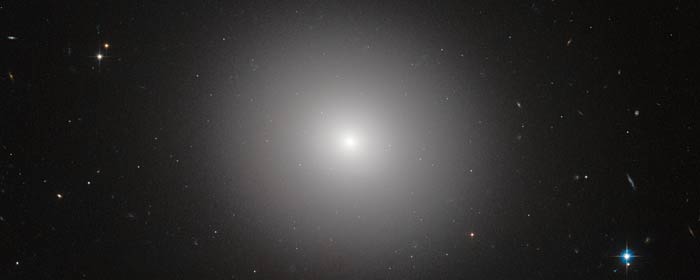ESO VLT Science Release | 2015 Apr 16
Death of Giant Galaxies Spreads from the Core
ESA Hubble Science Release | 2015 Apr 16
Hubble and VLT observations show that star formation shuts down in the centres of elliptical galaxies first
Astronomers have shown for the first time how star formation in "dead" galaxies sputtered out billions of years ago. The NASA/ESA Hubble Space Telescope and ESO's Very Large Telescope (VLT) have revealed that three billion years after the Big Bang, these galaxies still made stars on their outskirts, but no longer in their interiors. The quenching of star formation seems to have started in the cores of the galaxies and then spread to the outer parts. The results will be published in the 17 April 2015 issue of the journal Science.
Elliptical Galaxy IC 2006 - (Credit: ESA/Hubble, NASA)
Galaxies die from the inside out - (Credit: ESO)
A major astrophysical mystery has centred on how the massive, quiescent elliptical galaxies, common in the modern Universe, quenched their once furious rates of star formation. Such colossal galaxies, often also called spheroids because of their shape, typically pack in stars ten times as densely in the central regions as in our home galaxy, the Milky Way, and have about ten times its mass.
Astronomers refer to these big galaxies as red and dead as they exhibit an ample abundance of ancient red stars, but lack young blue stars and show no evidence of new star formation. The estimated ages of the red stars suggest that their host galaxies ceased to make new stars about ten billion years ago. This shutdown began right at the peak of star formation in the Universe, when many galaxies were still giving birth to stars at a pace about twenty times faster than nowadays. ...
Evidence for mature bulges and an inside-out quenching phase 3 billion years after the Big Bang - S. Tacchella et al
- Science 348(6232) 314 (17 Apr 2015) DOI: 10.1126/science.1261094 (pdf)

